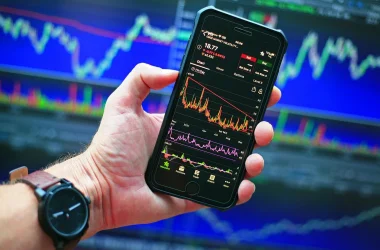In the fast-paced and ever-changing world of commodity trading, staying ahead of market trends is crucial for maximising profits. The commodity market, with its various raw materials and agricultural products, offers abundant opportunities for traders to capitalise on price movements. Recognizing trends in commodity marketing time can provide valuable insights, helping traders make informed decisions and execute profitable trades throughout the day.Being able to identify market trends gives traders a competitive edge, enabling them to spot potential opportunities and mitigate risks effectively. One of the essential strategies for trend identification is technical analysis, which involves studying historical price data and chart patterns to predict future price movements. Another valuable approach is fundamental analysis, where traders assess supply and demand factors, geopolitical events, and economic indicators that can impact commodity prices.Moreover, staying updated with relevant news and information is crucial in commodity trading. Global events, weather patterns, and government policies can significantly influence commodity markets, and being aware of these developments can lead to profitable positions. Additionally, using indicators like moving averages, relative strength index (RSI), and stochastic oscillators can assist traders in confirming trends and determining entry and exit points.
Definition of Market Trends:
Market trends refer to the general direction in which commodity prices are moving over a specific period. These trends can be categorised as uptrends, where prices are consistently rising, downtrends, where prices are declining, or sideways trends, where prices move within a relatively narrow range. Recognizing market trends is vital in commodity trading as it allows traders to align their positions with the prevailing market sentiment, increasing the likelihood of profitable trades. By understanding the different trends and their implications, traders can make more informed decisions and enhance their chances of success.
Factors Influencing Commodity Market Trends
The commodity market is influenced by a myriad of factors that drive trends in price movements. Supply and demand dynamics play a fundamental role, with imbalances leading to fluctuations in commodity prices. Economic indicators, such as GDP growth, manufacturing data, and interest rates, also impact trends by influencing demand for commodities. Additionally, geopolitical events and global news can trigger sudden price movements and create significant trend shifts. To identify profitable opportunities, traders must remain vigilant and stay updated on global events that can have an immediate impact on commodity prices. Being aware of the commodity market timeframes and trading hours is equally important, as trends may vary throughout the day based on trading volumes and market activities.
Analysing Intraday Commodity Trends
Intraday commodity trends are short-term price movements that occur within a single trading day. Analysing these trends can provide valuable insights into potential profit opportunities. Morning market analysis sets the tone for the day, considering trends that may have emerged overnight and their impact on the opening market. The midday session offers opportunities to assess price movements, identify potential trend reversals or continuations, and react to market news. The afternoon session, with its closing trends, helps traders gauge the market sentiment and strategize for the end of the trading day.
Morning Market Analysis
During commodity trading the early hours play a critical role in shaping the market’s direction for the day ahead. Traders must diligently monitor pre-market indicators and news to predict potential shifts in trends. The morning price movements are often influenced by overnight news, economic data, and market sentiment from other global financial centres. By identifying these early trends, traders can strategically position themselves to seize profitable opportunities as soon as the market officially opens.
Technical Analysis for Trend Identification
Technical analysis is a powerful tool for identifying trends and potential entry and exit points in commodity trading. Various technical indicators, such as moving averages, RSI, and MACD, can assist traders in spotting trends and determining potential trend reversals. Moving averages, in particular, provide traders with a visual representation of the prevailing trend, allowing them to make informed decisions based on the direction of the moving average and the crossover of different timeframes.
Afternoon Session and Closing Trends
The afternoon session holds considerable importance for traders as it sets the stage for the end of the trading day. Afternoon price movements can offer valuable insights into the market sentiment and potential closing trends. Identifying trends during this session can help traders position their trades effectively, taking advantage of any late-day price swings or consolidations.
Risk Management and Timing
Effective risk management is paramount in commodity trading to safeguard capital and manage potential losses. Traders should use appropriate position sizing, stop-loss orders, and risk-reward ratios to minimise the impact of adverse market movements. Timing is also essential in risk management. Entering trades during confirmed trend setups can increase the probability of success and reduce the risk of entering trades against prevailing market trends.
Identifying commodity market trends is a critical aspect of successful commodity trading. Understanding the definition and significance of market trends, as well as the factors influencing them, empowers traders to make informed decisions. Utilising technical analysis for trend identification and keeping a close eye on intraday price movements further enhances the ability to identify profitable opportunities throughout the day. Equally important is effective risk management, which allows traders to safeguard their capital and optimise the timing of their trades. By combining trend analysis with prudent risk management, traders can navigate the commodity market with confidence and increase their chances of success.To enhance their trading experience and stay up-to-date with real-time market data and analysis, traders can use the best commodity trading app .Leveraging the power of technology can provide a competitive edge and aid in making timely and well-informed trading decisions. By staying diligent in trend analysis, utilising the right tools, and managing risks effectively, traders can seize profitable opportunities throughout the day and achieve success in the dynamic world of commodity trading.
















